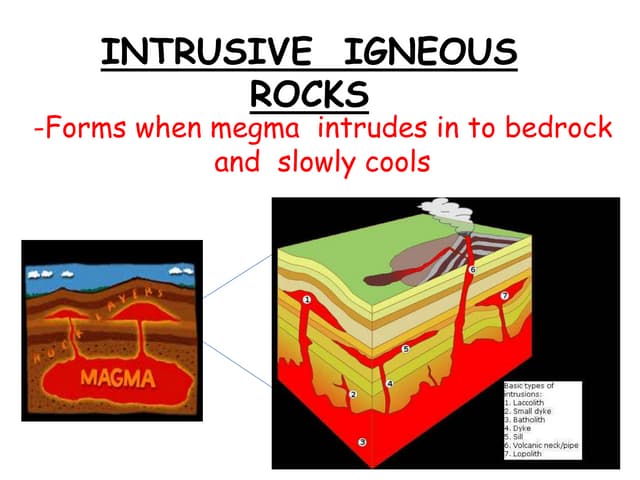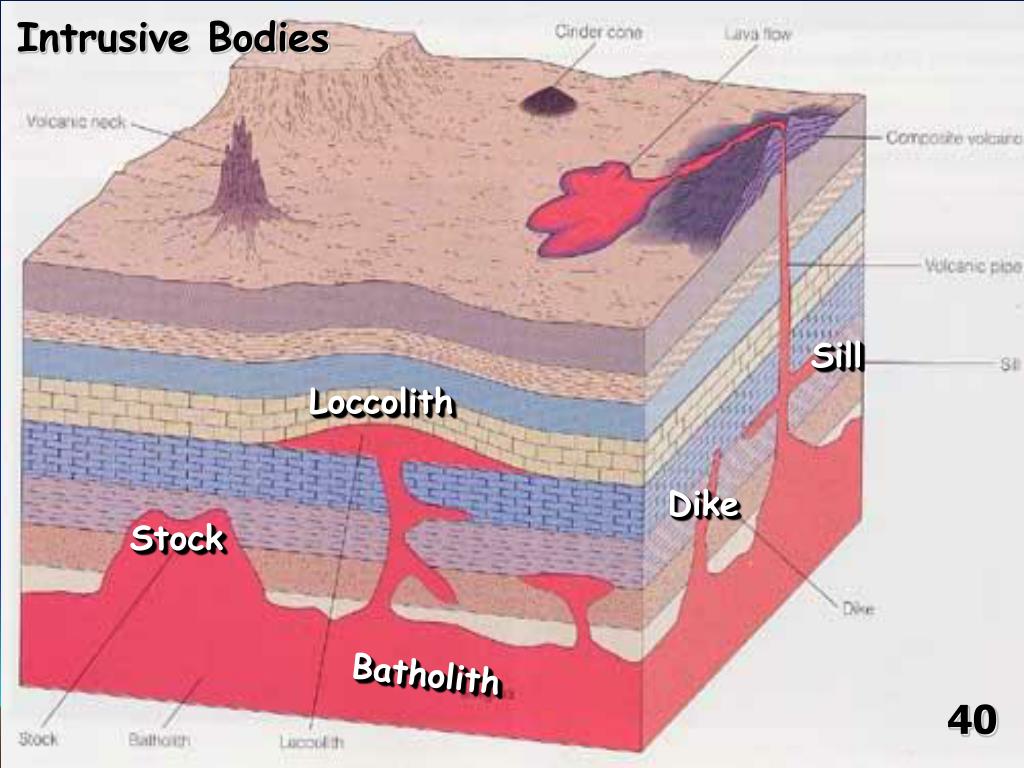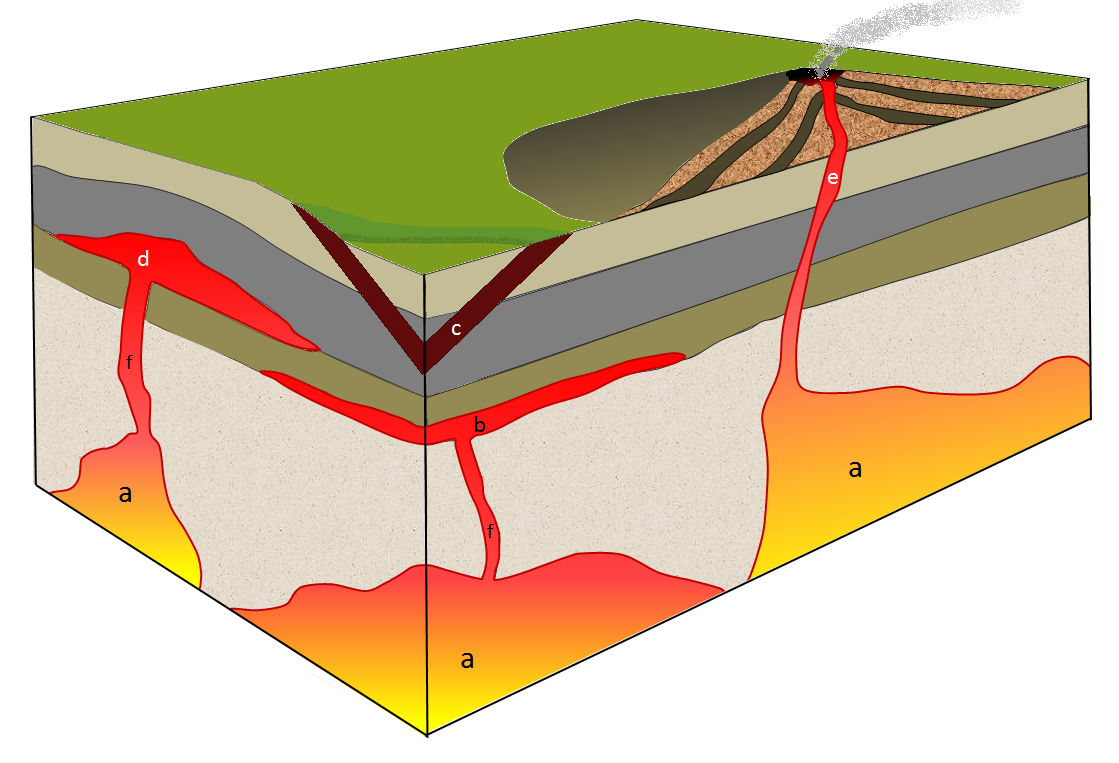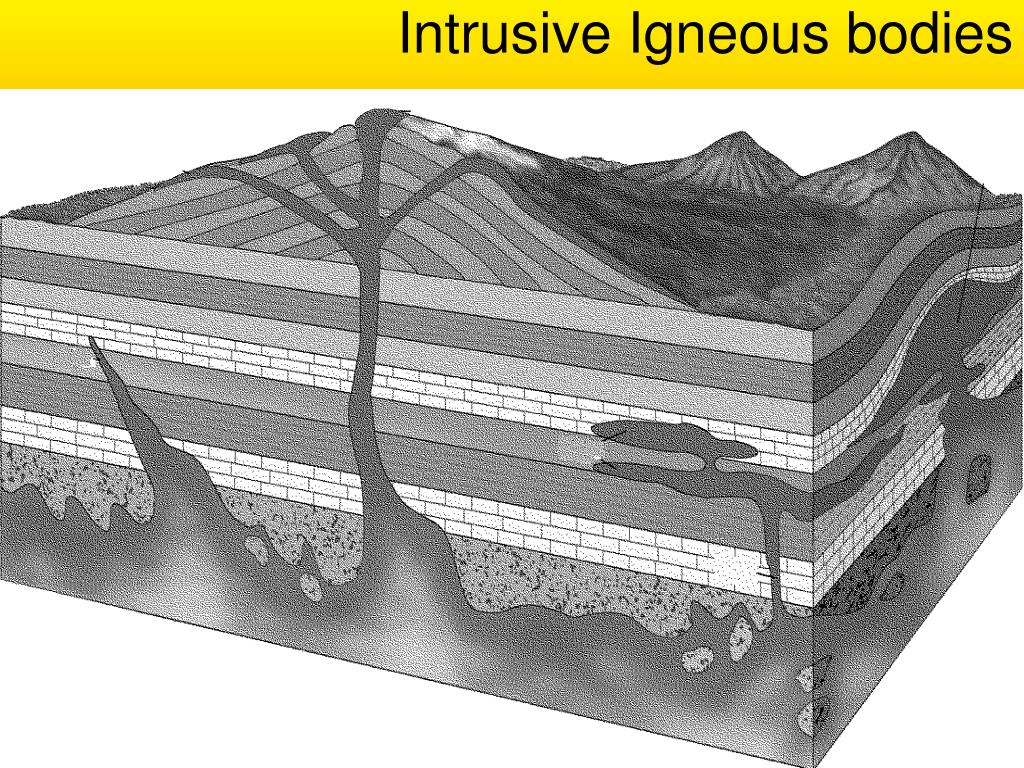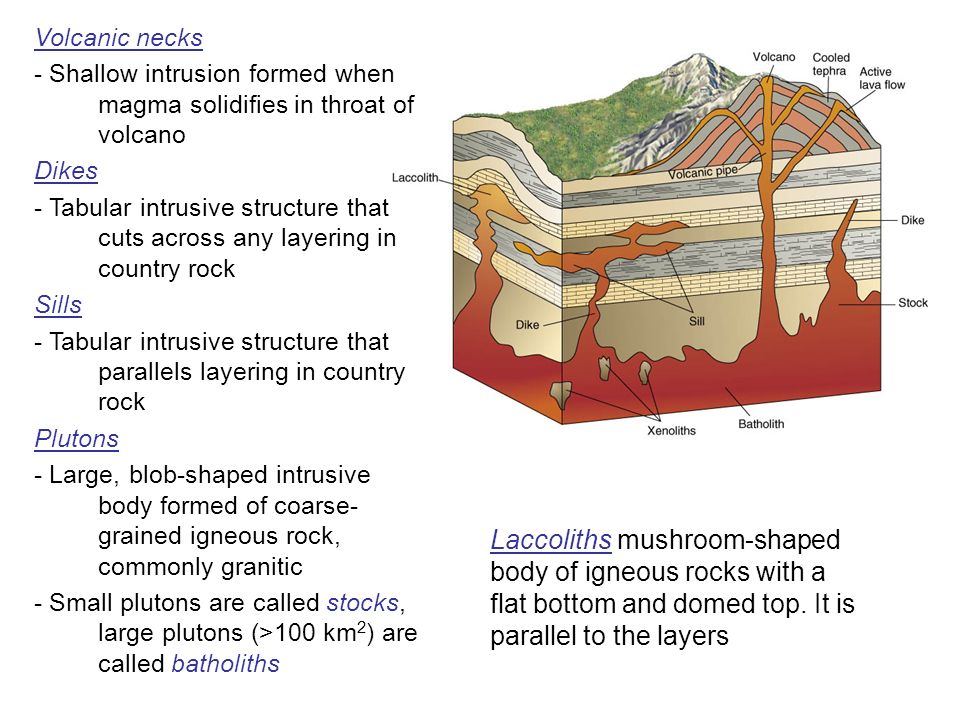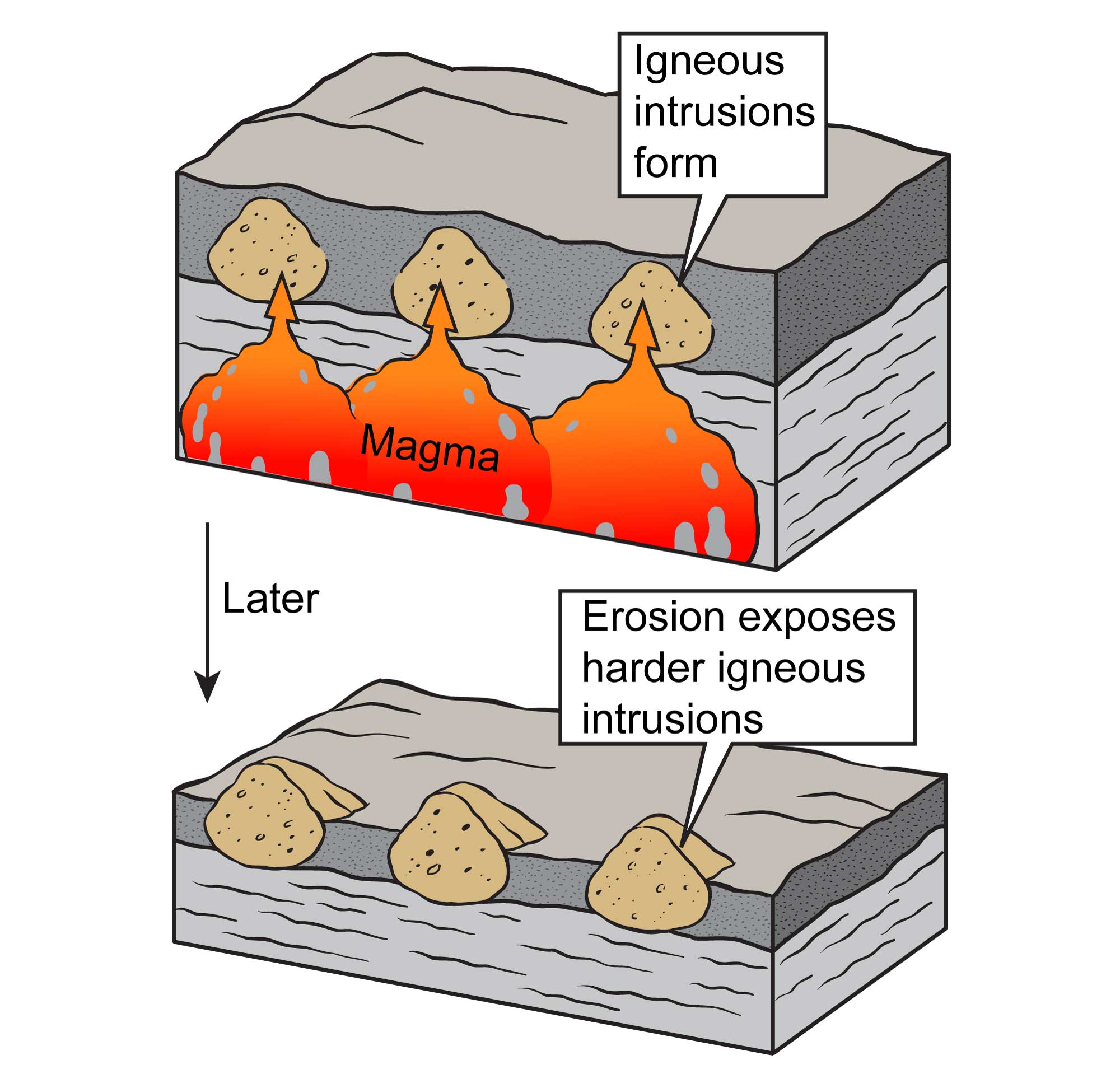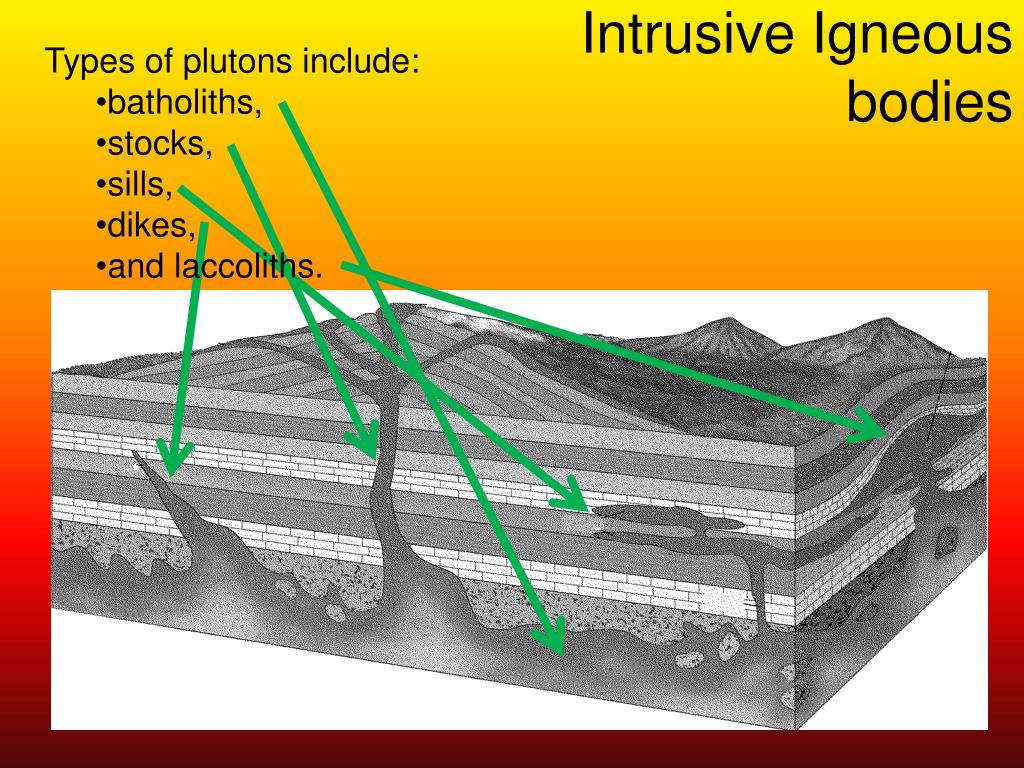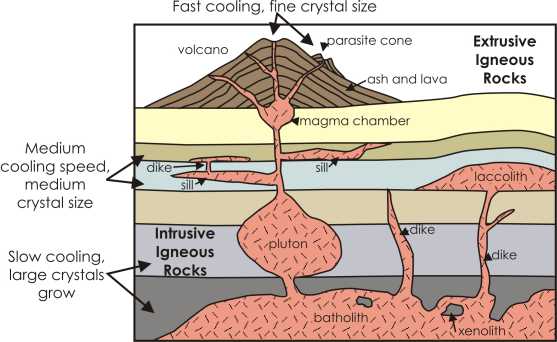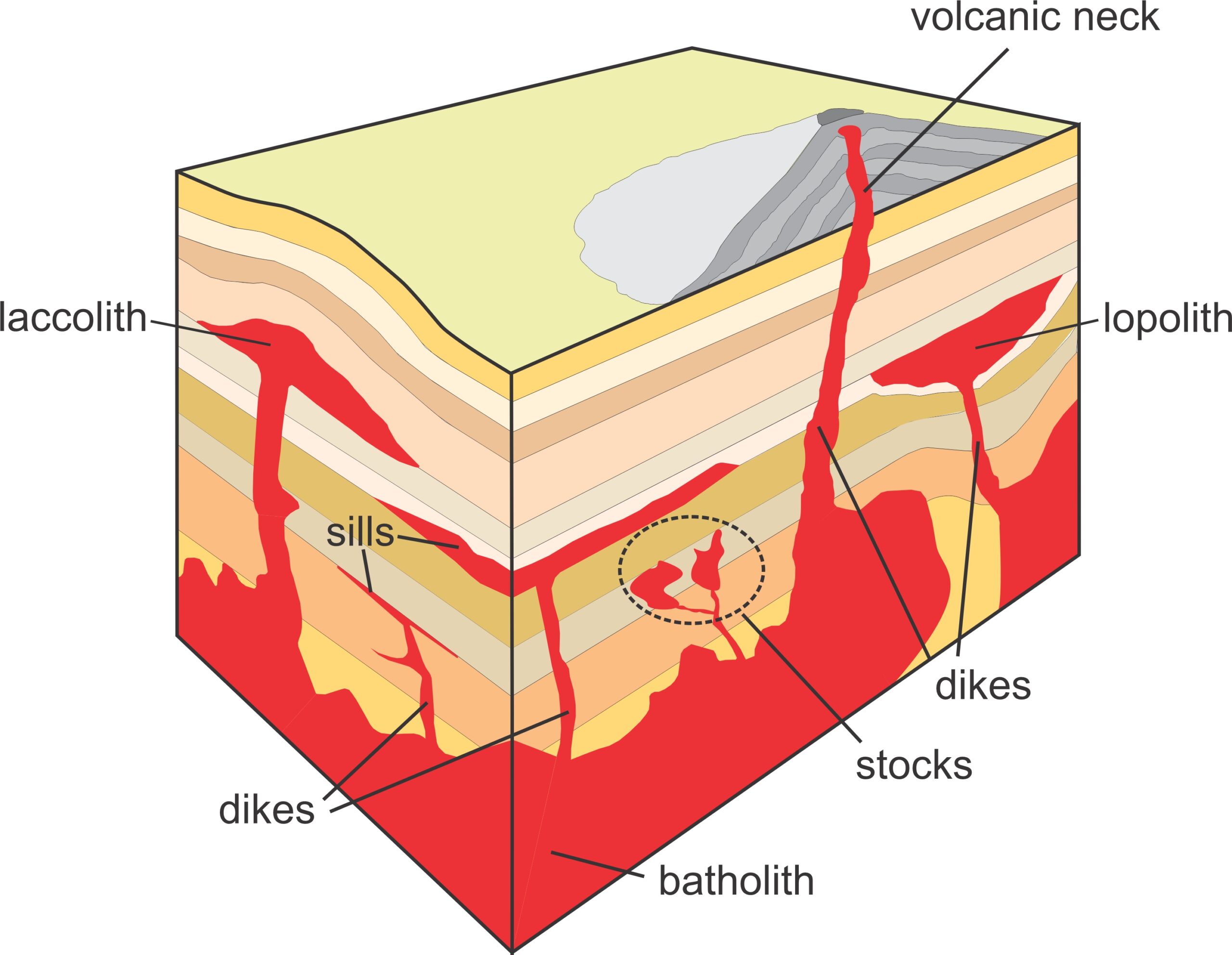Which Of The Following Is An Intrusive Igneous Body

The earth's geological makeup is a complex tapestry woven over millennia, shaped by forces both subtle and cataclysmic. Understanding the formation of rocks, particularly igneous rocks, is crucial for deciphering this history and unlocking secrets about our planet's past, present, and future.
At the heart of this understanding lies the ability to differentiate between the various types of igneous rock formations. One key distinction lies in the mode of formation: intrusive versus extrusive. This article will delve into intrusive igneous bodies, providing a comprehensive overview of their characteristics and exploring how they differ from their extrusive counterparts.
Intrusive Igneous Bodies: A Deep Dive
Intrusive igneous rocks, also known as plutonic rocks, form when magma cools and solidifies beneath the Earth's surface. The slow cooling process allows for the growth of large crystals, resulting in coarse-grained textures that are characteristic of these rocks.
Unlike extrusive rocks, which erupt onto the surface as lava, intrusive rocks never see the light of day until subsequent uplift and erosion expose them. This difference in formation profoundly affects their mineral composition and overall structure.
Key Characteristics of Intrusive Igneous Bodies
The defining trait of intrusive igneous bodies is their coarse-grained texture. This texture, also known as phaneritic, is a direct result of the slow cooling rates deep within the Earth's crust.
The slower cooling allows ions more time to migrate and form larger, well-developed crystals, visible to the naked eye. This contrasts sharply with the fine-grained or glassy textures of extrusive rocks, which cool rapidly on the surface.
Intrusive rocks also tend to be holocrystalline, meaning they are composed entirely of crystals. This is because the slow cooling process allows for complete crystallization of the magma.
Types of Intrusive Igneous Bodies
Intrusive igneous bodies manifest in a variety of forms, each with its unique characteristics and mode of emplacement. These bodies can be broadly classified based on their size, shape, and relationship to the surrounding country rock.
Batholiths are massive, irregularly shaped intrusive bodies, often extending over hundreds of square kilometers. They represent the solidified remnants of large magma chambers that cooled deep within the crust.
Stocks are similar to batholiths but smaller in size, typically less than 100 square kilometers in area. Both batholiths and stocks are often associated with mountain-building events and regional metamorphism.
Laccoliths are mushroom-shaped intrusions that form when magma intrudes between layers of sedimentary rock, causing the overlying strata to dome upwards. The Henry Mountains in Utah are a classic example of laccolithic intrusions.
Sills are tabular intrusions that are injected parallel to the layering of the surrounding rock. They can range in thickness from a few centimeters to hundreds of meters.
Dikes are tabular intrusions that cut across the layering of the surrounding rock. They often serve as conduits for magma to reach the surface during volcanic eruptions.
Veins are thin, sheet-like intrusions that fill fractures or cracks in the surrounding rock. They are often associated with hydrothermal activity and ore deposition.
Distinguishing Intrusive from Extrusive Rocks
The key difference between intrusive and extrusive igneous rocks lies in their cooling rates. This difference directly influences their texture and, to a lesser extent, their mineral composition.
Extrusive rocks, formed from lava flows or volcanic eruptions, cool rapidly on the Earth's surface. This rapid cooling inhibits the growth of large crystals, resulting in fine-grained or glassy textures.
Common examples of extrusive rocks include basalt, rhyolite, and obsidian. Unlike intrusive rocks, extrusive rocks often exhibit vesicular textures, containing gas bubbles trapped during rapid cooling.
Examples of Intrusive Igneous Rocks
Granite is perhaps the most well-known intrusive igneous rock. It is a coarse-grained, felsic rock composed primarily of quartz, feldspar, and mica.
Diorite is another common intrusive rock, with an intermediate composition between felsic and mafic. It is composed primarily of plagioclase feldspar and hornblende.
Gabbro is a coarse-grained, mafic intrusive rock composed primarily of plagioclase feldspar and pyroxene. It is commonly found in oceanic crust.
"The study of intrusive igneous rocks provides invaluable insights into the processes that shape the Earth's crust and mantle," says Dr. Emily Carter, a professor of geology at Stanford University. "Understanding their formation and composition is essential for deciphering the tectonic history of a region."
The Significance of Intrusive Igneous Bodies
Intrusive igneous bodies play a crucial role in the formation of ore deposits. Many economically important minerals, such as copper, gold, and silver, are concentrated within or around these intrusions due to hydrothermal activity.
Furthermore, the study of intrusive rocks provides valuable information about the composition and evolution of the Earth's mantle. By analyzing the minerals and trace elements within these rocks, geologists can gain insights into the processes occurring deep within the Earth.
Intrusive bodies also impact the surrounding rocks, causing contact metamorphism. The heat from the intrusion alters the mineralogy and texture of the adjacent rocks, creating metamorphic aureoles.
Looking Ahead: Future Research and Discoveries
The study of intrusive igneous bodies is an ongoing process, with new discoveries and insights constantly emerging. Advanced analytical techniques, such as isotope geochronology and trace element geochemistry, are providing increasingly detailed information about the age, origin, and evolution of these rocks.
Future research will likely focus on better understanding the interplay between magmatism, tectonics, and hydrothermal activity in the formation of ore deposits. Scientists also will be focusing on understanding magma movement within the earth.
By continuing to explore and investigate these geological features, we can gain a deeper understanding of the Earth's dynamic processes and the history they have etched into our planet.
